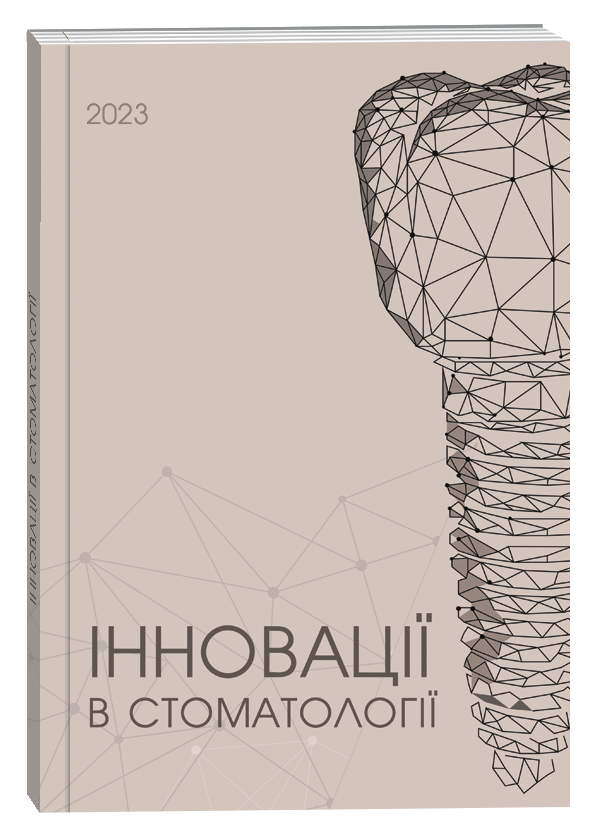DEVIATIONS FROM THE NORM OF BIOIMPEDANCE PARAMETERS OF THE BODY IN PATIENTS WITH DIFFERENT DEGREES OF PERIODONTAL DISEASE
DOI:
https://doi.org/10.35220/2523-420X/2023.4.4Keywords:
adults, dentistry, metabolic processes, bioimpedance indicators, periodontitisAbstract
In the structure of periodontal diseases, the most common forms of Pathology are gingivitis and periodontitis, which are based on inflammation – a typical pathological process caused by changes in the body that occur under the influence of periodontal pathogens. Both local and general factors play an important role in the pathogenesis of periodontal diseases. Purpose of the study. Study of a number of bioimpedance indicators that characterize metabolic processes in the body in adult patients with varying degrees of periodontal disease. Material and research methods. The study involved 63 patients aged 35–60 years with varying degrees of periodontal tissue damage who were examined at the dental clinic № 1 in Lviv. Patients were divided into 5 groups. Using the bioimpedance analyzer of body composition component ABC-01 “Medas”, 4 indicators characterizing the intensity of metabolic processes and the content of metabolically active cells were evaluated. A statistically significant difference between alternative quantitative traits with a distribution corresponding to the normal law was evaluated using Student’s t-test. The difference was considered statistically significant at p<0.01. Results and their discussion. From the data obtained by us, it can be seen that in the group of patients without dental pathology, these indicators of the level of metabolic processes did not significantly differ from the average norm. Approximately the same pattern was observed in patients with catarrhal gingivitis (p>0.05). Conclusions. The results of the study indicate the importance of using bioimpedance analysis to assess the condition of patients with periodontitis. It was found that with the deterioration of periodontal disease, there is a decrease in the main metabolic parameters, which can serve as an additional criterion for diagnosing and monitoring the effectiveness of treatment. The identified correlations between the degree of periodontal damage and changes in bioimpedance parameters confirm the need for an integrated approach to the treatment of periodontitis, with particular attention to the correction of metabolic disorders in patients.
References
Наврузова У. О. Особливості пародонтиту при порушенні обміну речовин. Біологія та інтегративна медицина. 2019. № 2 (30). С. 28–42.
Сабірова А. І. Модифіковані фактори ризику розвитку та прогресування захворювань тканин пародонту. Acta Biomedica Scientifica. 2022. № 7 (2). С. 182–192.
Копецький І. С., Побожева Л. В., Шевелюк Ю. В. Взаємозв’язок запальних захворювань пародонту та загальносоматичних захворювань. Лікувальна справа. 2019. № 2. С. 7–12.
Price K.L., Earthman, C.P. Update on body composition tools in clinical settings: computed tomography, ultrasound, and bioimpedance applications for assessment and monitoring. European journal of clinical nutrition, 2019. № 73(2). Р. 187–193.
Драпкіна О. М. Біоімпедансний аналіз складу тіла: що важливо знати терапевту? Profilakticheskaya Meditsina. 2022. № 25. С. 10–15.
Repetska OM Dynamics of protein metabolism indicators in the oral fluid after complex treatment of generalized periodontitis in young persons on the background of primary hypothyroidism. JMBS. 2022. № 7(4). Р. 95–99. DOI: 10.26693/jmbs07.04.095.








